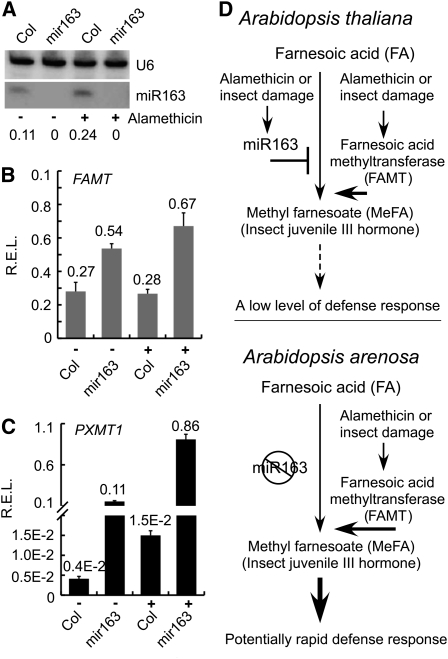Figure 6.
Alamethicin Induces miR163 and Its Target Gene Expression in A. thaliana and a Model for miR163-Mediated Natural Variation of a Defense Mechanism in Related Species.
(A) Small RNA gel blot analysis of endogenous miR163 accumulation in 4- to 5-week-old leaves in A. thaliana wild type (Col) and miR163 T-DNA mutant (mir163) after 10-h treatments with 0.1% methanol (control) or alamethicin (10 μg/μL). Numbers indicate relative densitometric intensities of miR163 relative to the U6 loading control (n = 2).
(B) qRT-PCR of PXMT1 expression in Col and mir163 with or without alamethicin (10 μg/μL) treatment. The relative expression level (R.E.L.) was normalized to endogenous Ef1-α transcript levels (n = 3).
(C) qRT-PCR of FAMT expression in Col and mir163 with or without alamethicin (10 μg/μL) treatment (n = 3). Values are mean ± se. P = 0.01 (*), 0.001 (**), and 0.0001 (***), respectively.
(D) In inbreeding rapid cycling A. thaliana, both miR163 and its target gene (FAMT) are induced by wounding and/or fungal elicitors in response to insect bites and physical damages. As a result, FAMT expression is low because of miR163 accumulation, resulting in a low level of defense response. In outcrossing and late flowering A. arenosa, this defense response pathway is highly inducible due to loss of miR163 expression, leading to rapid and effective defense response. Constant maintenance of this defense pathway in an outcrossing and late flowering species (e.g., to prevent from insect bites and mechanical wounding) might have promoted the loss of miR163 expression.

